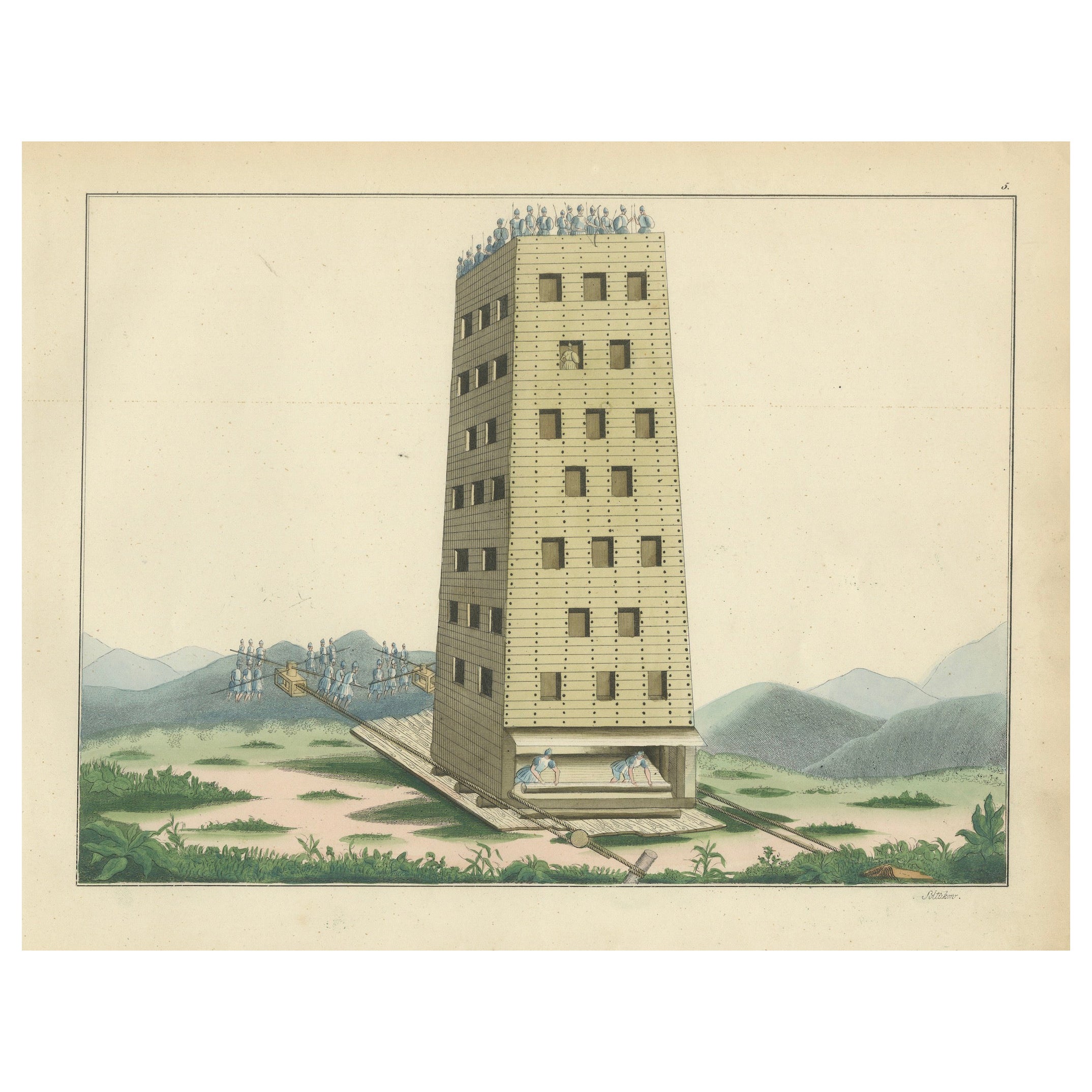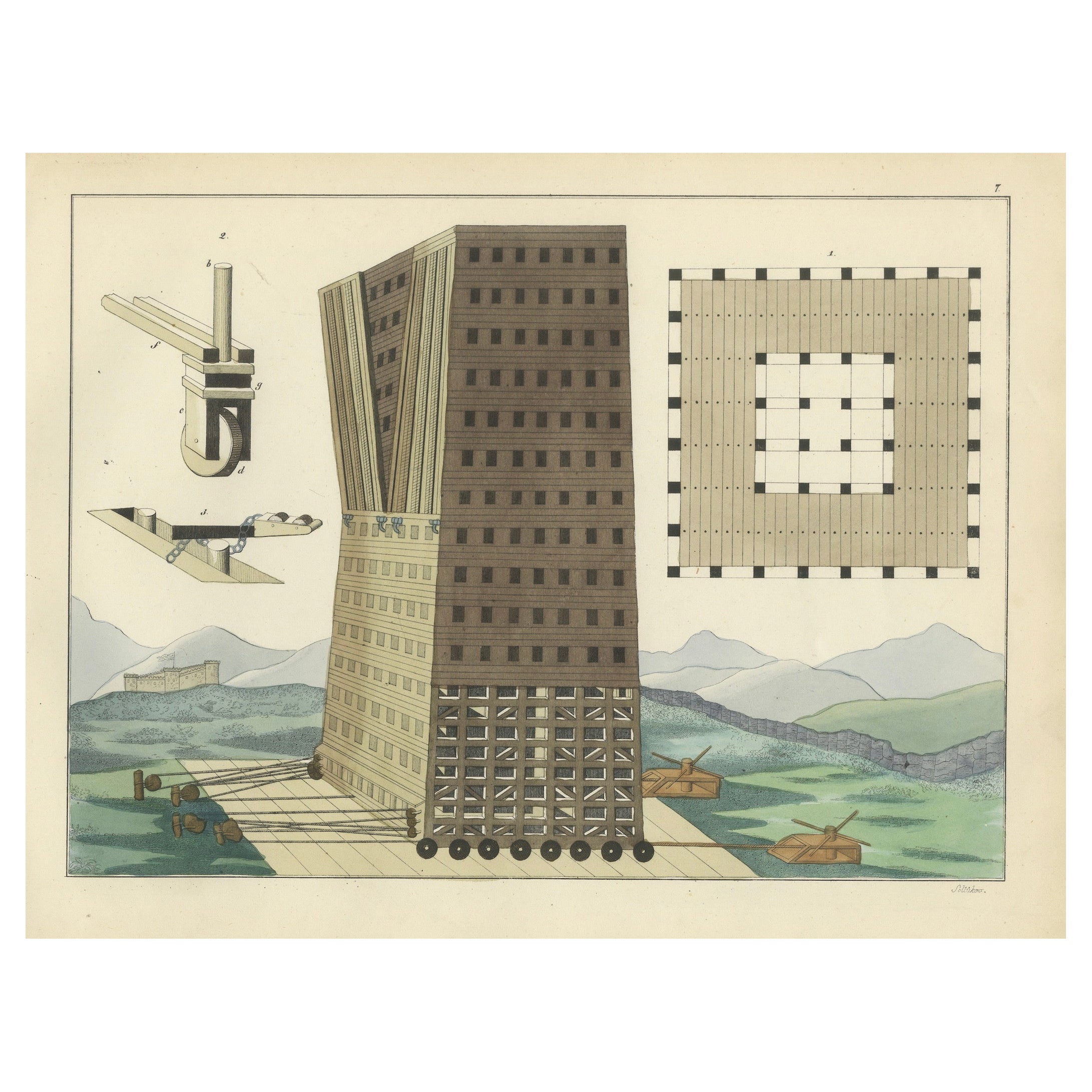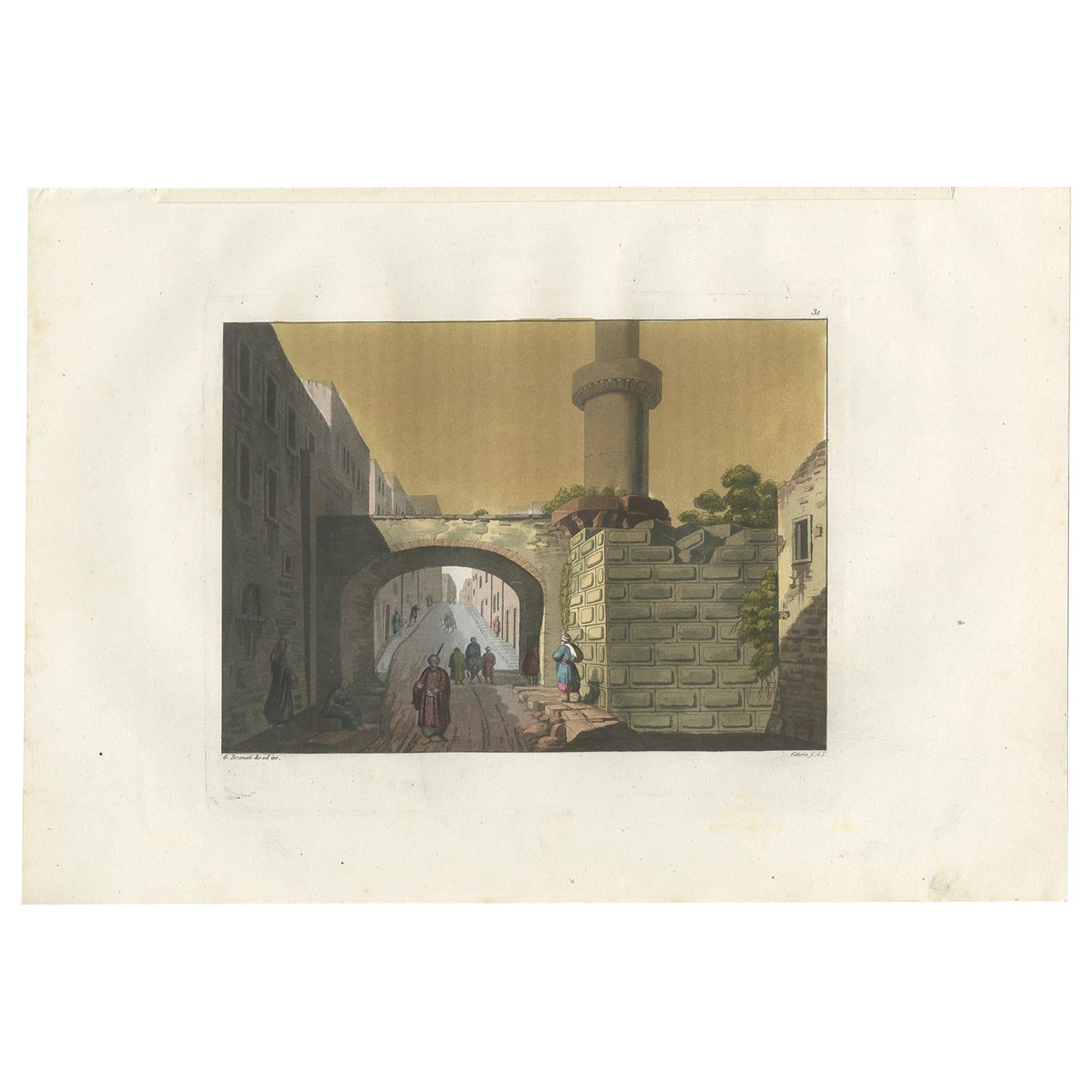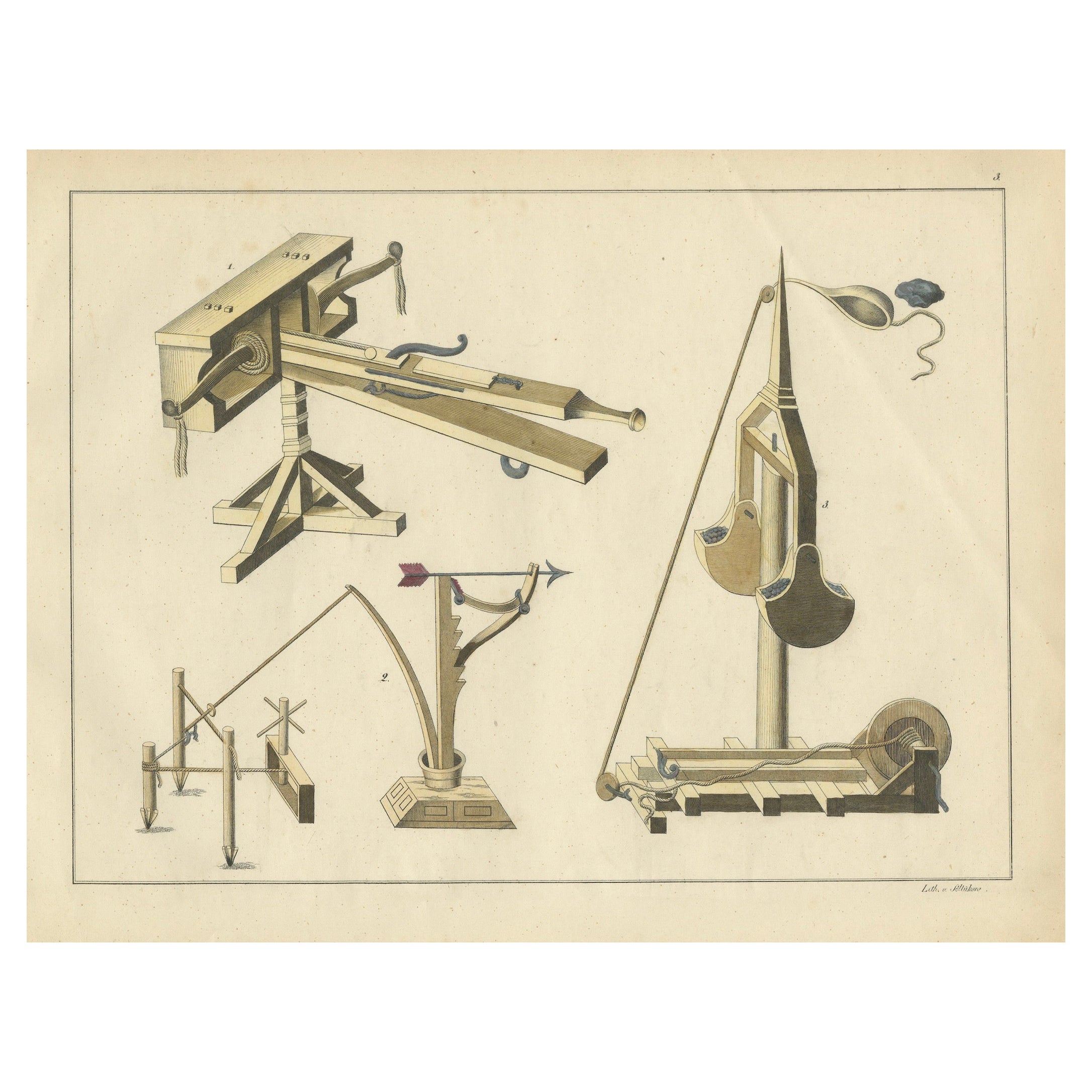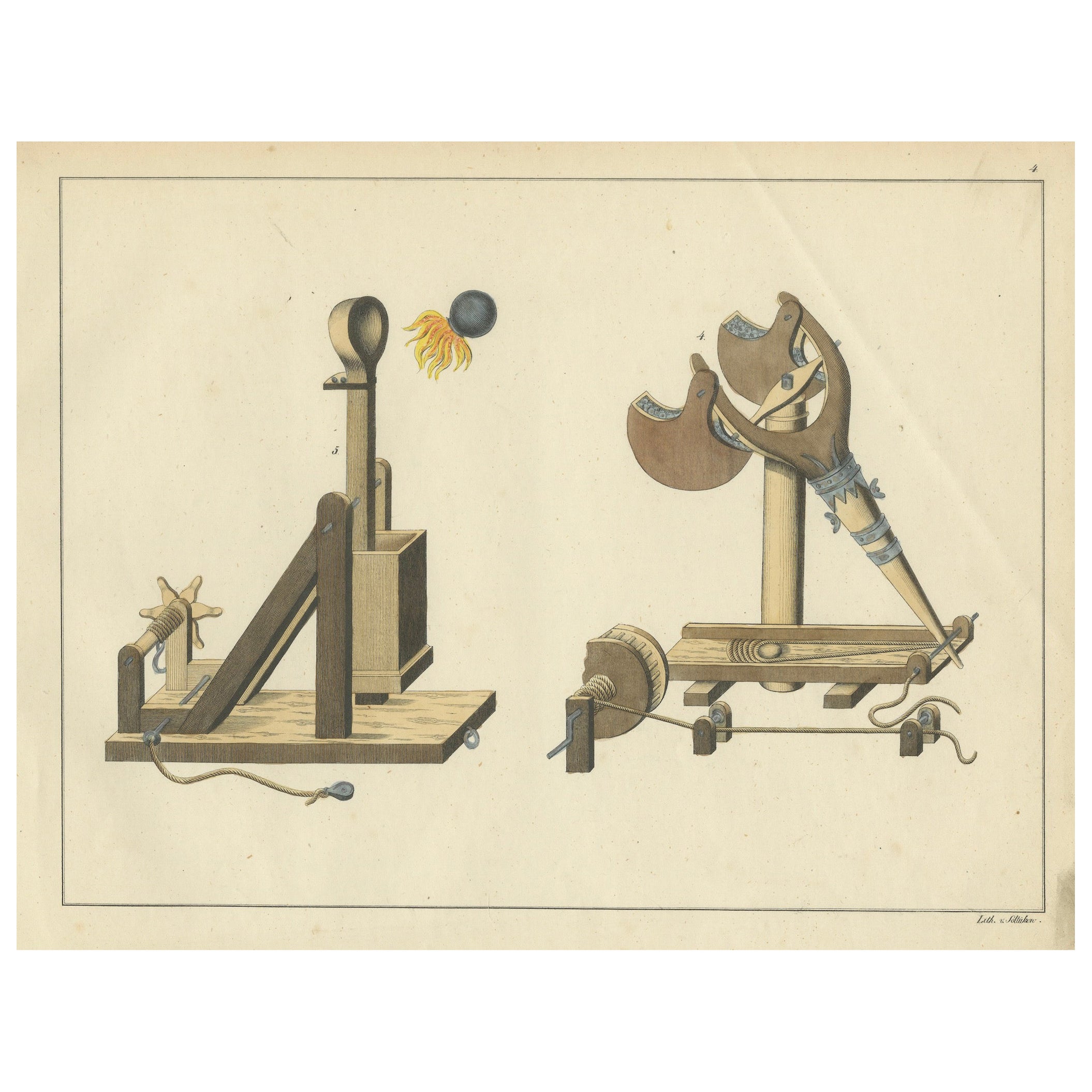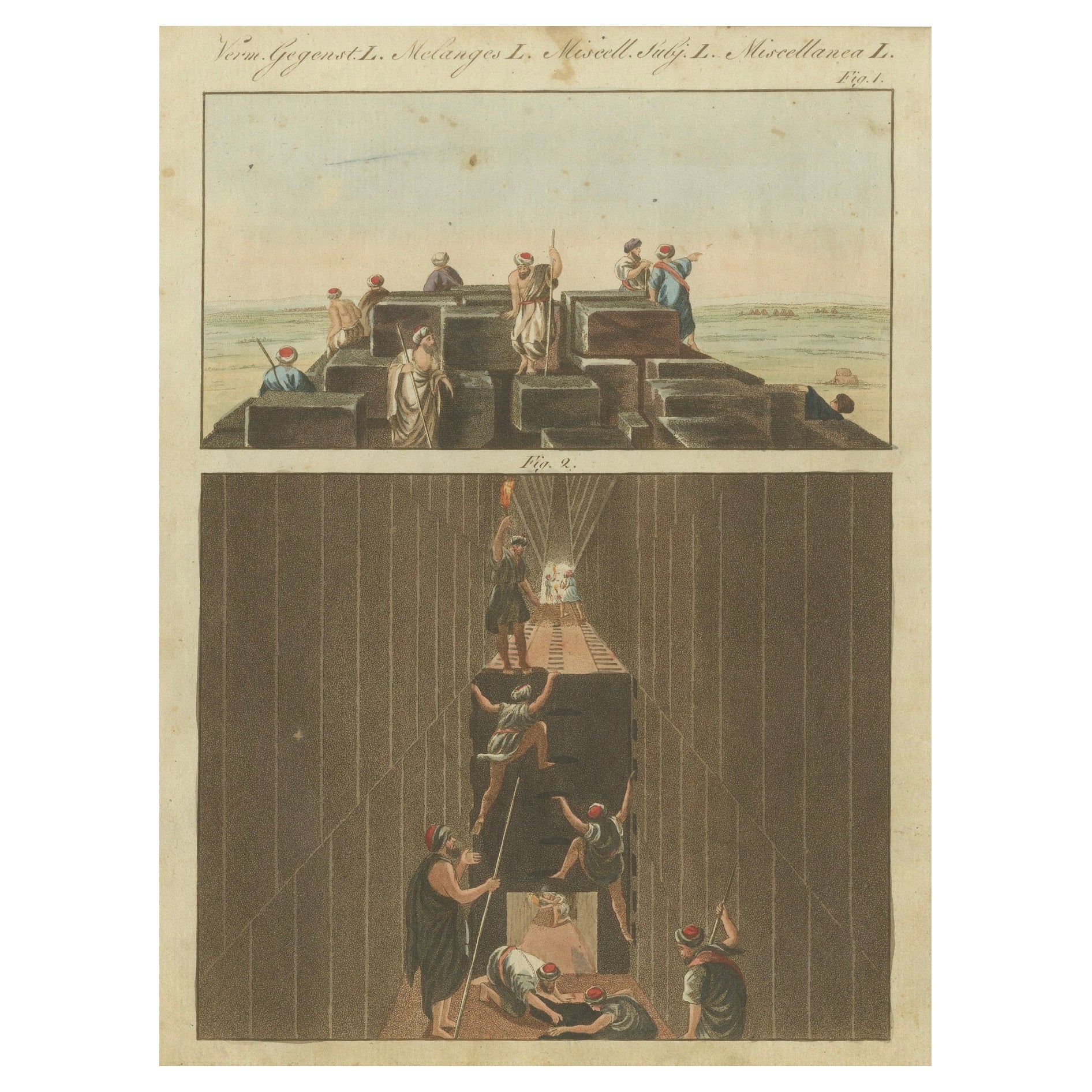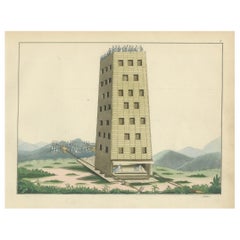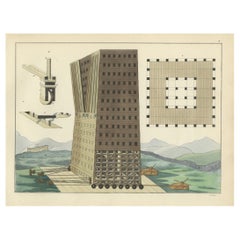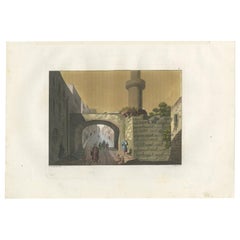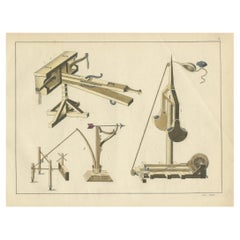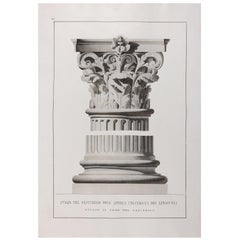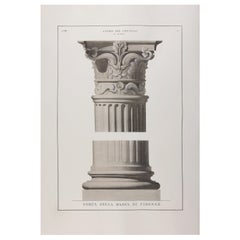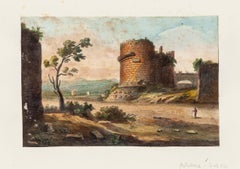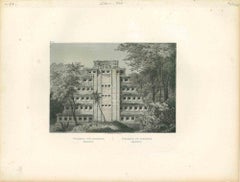Items Similar to 19th-Century Hand-Coloured Lithograph of a Multi-Level Medieval Siege Tower
Want more images or videos?
Request additional images or videos from the seller
1 of 11
19th-Century Hand-Coloured Lithograph of a Multi-Level Medieval Siege Tower
$421.24
$526.5520% Off
£312.91
£391.1420% Off
€352
€44020% Off
CA$581.13
CA$726.4120% Off
A$638.82
A$798.5320% Off
CHF 335.73
CHF 419.6720% Off
MX$7,757.61
MX$9,697.0120% Off
NOK 4,188.21
NOK 5,235.2620% Off
SEK 3,968.03
SEK 4,960.0420% Off
DKK 2,679.61
DKK 3,349.5120% Off
About the Item
19th-Century Hand-Coloured Lithograph of a Multi-Level Medieval Siege Tower
This impressive hand-coloured lithograph features a detailed depiction of a multi-level medieval siege tower, a towering war machine used to scale fortified walls during sieges. The print originates from the 1842 publication *Der Rittersaal: Eine Geschichte des Ritterthums*, created by Friedrich Martin von Reibisch and historically documented by Dr. Franz Kottenkamp. It highlights the architectural ingenuity and strategic role of siege engines in medieval warfare.
The siege tower in this illustration is a massive, multi-tiered structure equipped with battlements and openings for archers or infantry. Each level is meticulously drawn, showing its layered wooden construction, defensive parapets, and reinforced framework. At the lower level, beams and rollers suggest the tower's mobility, designed to advance toward enemy fortifications. The inclusion of mountainous scenery and lush vegetation in the background adds context and depth to the composition.
Condition:
This lithograph is in excellent condition for its age, with finely preserved hand-colouring and sharp, clear details. Light toning around the edges and minimal foxing contribute to its authentic antique character without detracting from its visual appeal.
This rare piece is perfect for collectors of military history, medieval siege technology, or historical prints. Its combination of technical accuracy and artistic execution makes it a standout addition to any collection or display dedicated to the evolution of warfare and medieval engineering.
Siege towers like the one depicted in this lithograph were used in numerous battles throughout ancient and medieval history, particularly during large-scale sieges of fortified cities or castles. Their primary function was to allow attacking forces to scale high walls while providing cover from defensive projectiles. Below are some notable historical periods and battles where siege towers played a role:
---
1. Ancient Battles
- Siege of Troy (circa 12th or 13th century BCE, legendary): While primarily referenced in 'The Iliad', various siege devices, including possible towers, were imagined as part of the assault on Troy's walls.
- Siege of Nineveh (612 BCE): The Babylonians, Medes, and Scythians used siege engines, likely including towers, to breach the Assyrian capital's formidable walls.
- Siege of Tyre (332 BCE): Alexander the Great famously used innovative siege techniques, including movable towers, to conquer the island city of Tyre.
2. Roman Battles
- Siege of Avaricum (52 BCE): Julius Caesar's forces built massive siege towers to breach the walls of this Gallic stronghold during the Gallic Wars.
- Siege of Jerusalem (70 CE): Roman forces under Titus used siege towers to attack the fortified walls of Jerusalem during the Jewish-Roman War.
3. Medieval Battles
- Siege of Antioch (1097-1098, First Crusade): Crusaders constructed siege towers to assault the city's formidable walls, ultimately capturing the city.
- Siege of Jerusalem (1099, First Crusade): The Crusaders famously used wooden siege towers to breach Jerusalem's heavily defended walls.
- Siege of Acre (1189-1191, Third Crusade): Richard the Lionheart's forces used siege towers and other engines to take this strategically vital city.
- Siege of Constantinople (1204, Fourth Crusade): Siege towers and other devices were employed by the Crusaders to breach the city's defenses.
4. Late Medieval Battles
- Siege of Orléans (1428-1429, Hundred Years' War): While cannons were already in use, the English used siege towers as part of their assault on Orléans.
- Siege of Rhodes (1480): The Ottoman Empire brought massive siege towers to attack the Knights Hospitaller defending Rhodes.
---
Siege towers were primarily used in battles where defenders relied on tall fortifications. Constructed on-site from wood, they provided archers and infantry a protected way to assault walls. As gunpowder and cannons became prevalent in the late Middle Ages, siege towers fell out of use, as fortifications could be breached more efficiently through artillery bombardment.
This lithograph likely references the siege engines of the Crusades or similar medieval campaigns, where such towers were iconic symbols of military ingenuity.
This rare and visually stunning piece is perfect for collectors of military history, medieval siege technology, or enthusiasts of knightly art. Its detailed craftsmanship and historical significance make it an ideal candidate for framing and display in a study, office, or gallery.
- Dimensions:Height: 9.06 in (23 cm)Width: 11.03 in (28 cm)Depth: 0.01 in (0.2 mm)
- Materials and Techniques:
- Place of Origin:
- Period:
- Date of Manufacture:1842
- Condition:This lithograph is in very good condition for its age, with finely preserved hand-colouring and sharp, clear details. Light toning around the edges and minimal foxing contribute to its authentic antique character without detracting from its visuals.
- Seller Location:Langweer, NL
- Reference Number:Seller: BG-14009-101stDibs: LU3054342788932
About the Seller
5.0
Recognized Seller
These prestigious sellers are industry leaders and represent the highest echelon for item quality and design.
Platinum Seller
Premium sellers with a 4.7+ rating and 24-hour response times
Established in 2009
1stDibs seller since 2017
2,636 sales on 1stDibs
Typical response time: <1 hour
- ShippingRetrieving quote...Shipping from: Langweer, Netherlands
- Return Policy
Authenticity Guarantee
In the unlikely event there’s an issue with an item’s authenticity, contact us within 1 year for a full refund. DetailsMoney-Back Guarantee
If your item is not as described, is damaged in transit, or does not arrive, contact us within 7 days for a full refund. Details24-Hour Cancellation
You have a 24-hour grace period in which to reconsider your purchase, with no questions asked.Vetted Professional Sellers
Our world-class sellers must adhere to strict standards for service and quality, maintaining the integrity of our listings.Price-Match Guarantee
If you find that a seller listed the same item for a lower price elsewhere, we’ll match it.Trusted Global Delivery
Our best-in-class carrier network provides specialized shipping options worldwide, including custom delivery.More From This Seller
View All19th-Century Hand-Coloured Lithograph of a Medieval Siege Tower in Action
Located in Langweer, NL
Title: 19th-Century Hand-Coloured Lithograph of a Medieval Siege Tower in Action
Description: This exceptional hand-coloured lithograph depicts a towering Medieval siege tower, a cr...
Category
Antique 1840s German Prints
Materials
Paper
$574 Sale Price
25% Off
19th-Century Detailed Hand-Coloured Lithograph of a Large Medieval Siege Tower
Located in Langweer, NL
19th-Century Hand-Coloured Lithograph of a Large Medieval Siege Tower with Details
Description: This finely executed hand-coloured lithograph presents a massive 'medieval siege tower', complete with structural details and mechanisms used during large-scale sieges. Taken from the 1842 publication 'Der Rittersaal: Eine Geschichte des Ritterthums', this work by Friedrich Martin von Reibisch and Dr. Franz Kottenkamp highlights the engineering ingenuity of siege warfare during the Middle Ages.
The central focus of the illustration is the monumental siege tower, meticulously depicted with wooden reinforcements, a sloped base, and numerous small windows for archers and infantry. Wheels at the foundation highlight the mobility of this immense structure, while a wooden floor plan in the top right corner provides an aerial view of its grid-based layout. Additionally, the inset diagrams on the left showcase key mechanical components, including pulley systems and structural beams used to assemble or operate the tower effectively.
In the foreground, two smaller siege devices are displayed, likely for additional artillery or defensive support. The rolling landscape, complete with castles and distant hills, adds a scenic backdrop that complements the detailed technical rendering.
Condition: This lithograph remains in very good condition, with well-preserved hand-colouring and sharp, clear lines. Minor age-toning and light foxing add to the print’s antique charm without diminishing its visual impact.
Ideal for collectors of military history, medieval warfare, or engineering art...
Category
Antique 1840s Prints
Materials
Paper
Antique Print of Ruins of the Antonia Tower by Ferrario '1831'
Located in Langweer, NL
Original antique print of ruins of the Antonia tower. This print originates from 'Costume Antico e Moderno: Palestine, China, India, Oceania' by Ferrario. Published 1831.
Category
Antique Mid-19th Century Prints
Materials
Paper
$239 Sale Price
20% Off
19th-Century Hand-Coloured Lithograph of Medieval Siege Engines and Catapults
Located in Langweer, NL
Title: 19th-Century Hand-Coloured Lithograph of Medieval Siege Engines and Catapults
Description: This meticulously detailed hand-coloured lithograph illustrates a series of medie...
Category
Antique 1840s Prints
Materials
Paper
19th-Century Hand-Coloured Lithograph of Medieval Catapults and Siege Engines
Located in Langweer, NL
Title: 19th-Century Hand-Coloured Lithograph of Medieval Catapults and Siege Engines
Description: This finely hand-coloured lithograph features two intricately designed 'medieval ...
Category
Antique 1840s Prints
Materials
Paper
1805 Hand-Colored Engraving of Ancient Pyramid Construction from Bertuch’s Work
Located in Langweer, NL
Title: 1805 Hand-Colored Engraving of Ancient Pyramid Construction from Bertuch’s Work
Description: This remarkable hand-colored engraving is from Friedrich Justin Bertuch’s *Port...
Category
Antique Early 1800s Prints
Materials
Paper
You May Also Like
Italian 19th Century Big Size Florence Architectural Hand-Coloured Print
Located in Scandicci, Florence
A rare extra-large print, printed on engraving paper with an antique star press and watercoloured by hand representing an antique capital. The capital'...
Category
Antique 1840s Italian Neoclassical Prints
Materials
Paper
Italian 19th Century Big Size Florence Architectural Hand-Colored Print
Located in Scandicci, Florence
A rare extra-large print, printed on engraving paper with an antique star press and watercolored by hand representing an antique capital. The capital's...
Category
Antique 1840s Italian Neoclassical Prints
Materials
Paper
Tomb of Caecilia Metella - Hand Watercolored Etching - 19th Century
Located in Roma, IT
Tomb of Caecilia Metella is an original etching, hand-colored on paper realized by an Anonymous artist of the XIX century, the state of artwork is good with some foxing on the upper ...
Category
19th Century Figurative Prints
Materials
Watercolor, Etching
Ancient View of the Pyramid of Papantla - Original Lithograph - Early 1800
Located in Roma, IT
Ancient View of the Pyramid of Papantla is an original modern artwork realized in France in the first half of the 19th Century.
Original Lithograp...
Category
Early 19th Century Modern Figurative Prints
Materials
Lithograph
Italian 19th Century Big Size Florence Architectural Hand-Colored Print
Located in Scandicci, Florence
"Porta nel Vestibolo dell'antica Università dei Lanaioli - Studio al Vero del Capitello"
A rare extra-large print, printed on engraving paper with an antique star press and watercolored by hand representing an antique capital...
Category
Antique 1840s Italian Neoclassical Prints
Materials
Paper
19th Century Pair of Original Hand Coloured Engravings of Egypt
Located in Dublin 8, IE
19th Century pair of original hand coloured engravings of Egypt in gilt wood frames. After Cecile by Lienard & Reville. Titled “Thebes: Karnak. Vue de la Porte et des Temples du Sud”...
Category
Antique Mid-19th Century Irish Grand Tour Prints
Materials
Paper
More Ways To Browse
Cherry Blossom Screen
Cherub Marble Clock
Chinese Ancestral Art
Chinese Boxes With Dragon Motif
Chinese Porcelain Immortal
Chinese Shrine
Chinese Silver And Jade
Chinoiserie Cushion
Chinoiserie Pottery Blue
Chocolate Sculpture
Cologne Cathedral
Colonial American Desk
Concrete Cylinder
Copper Bird Sculpture
Curtis Jere Sculpture Birds In Flight
Curved White Table
Daum Crystal Animals
Deer Hoof
